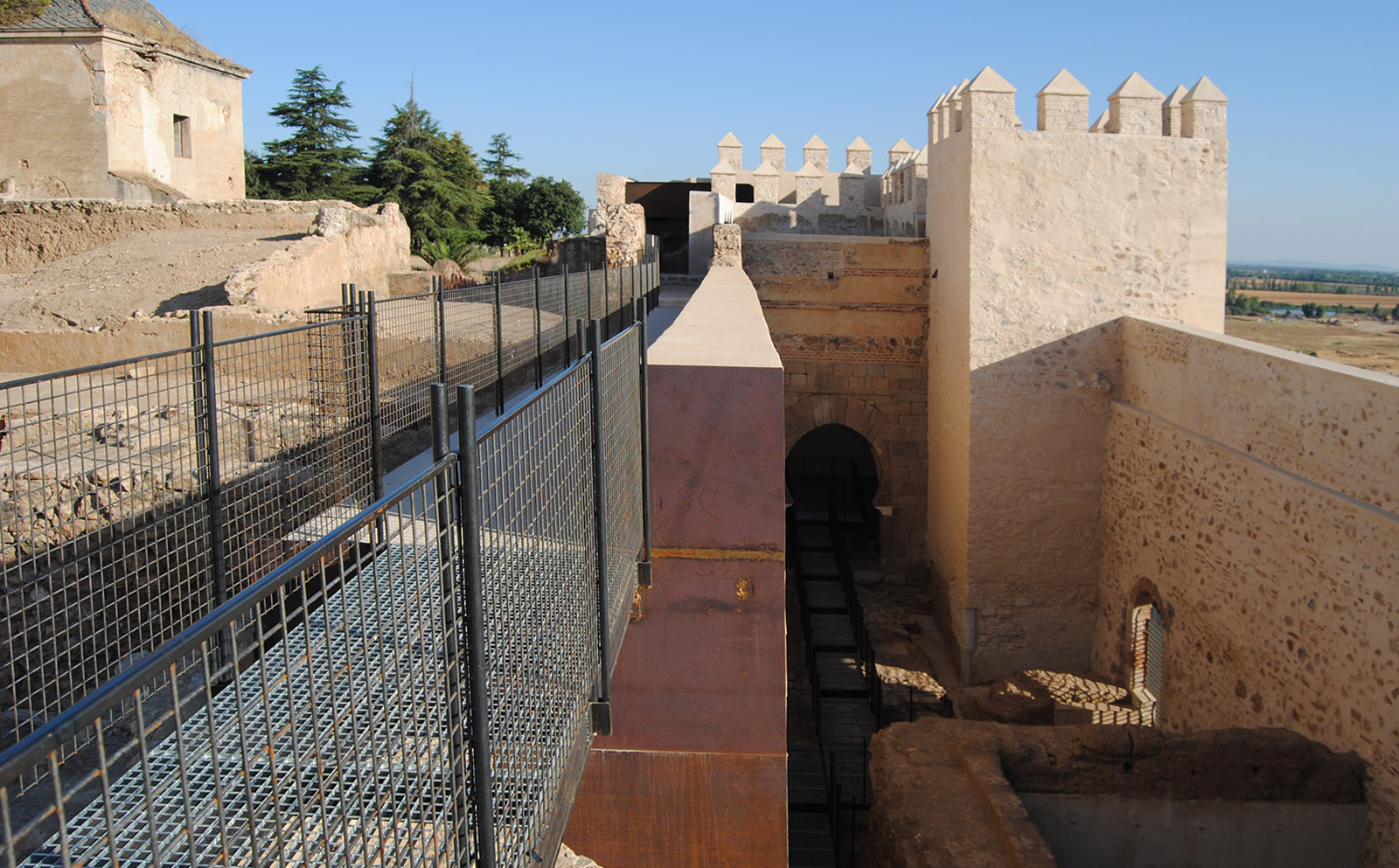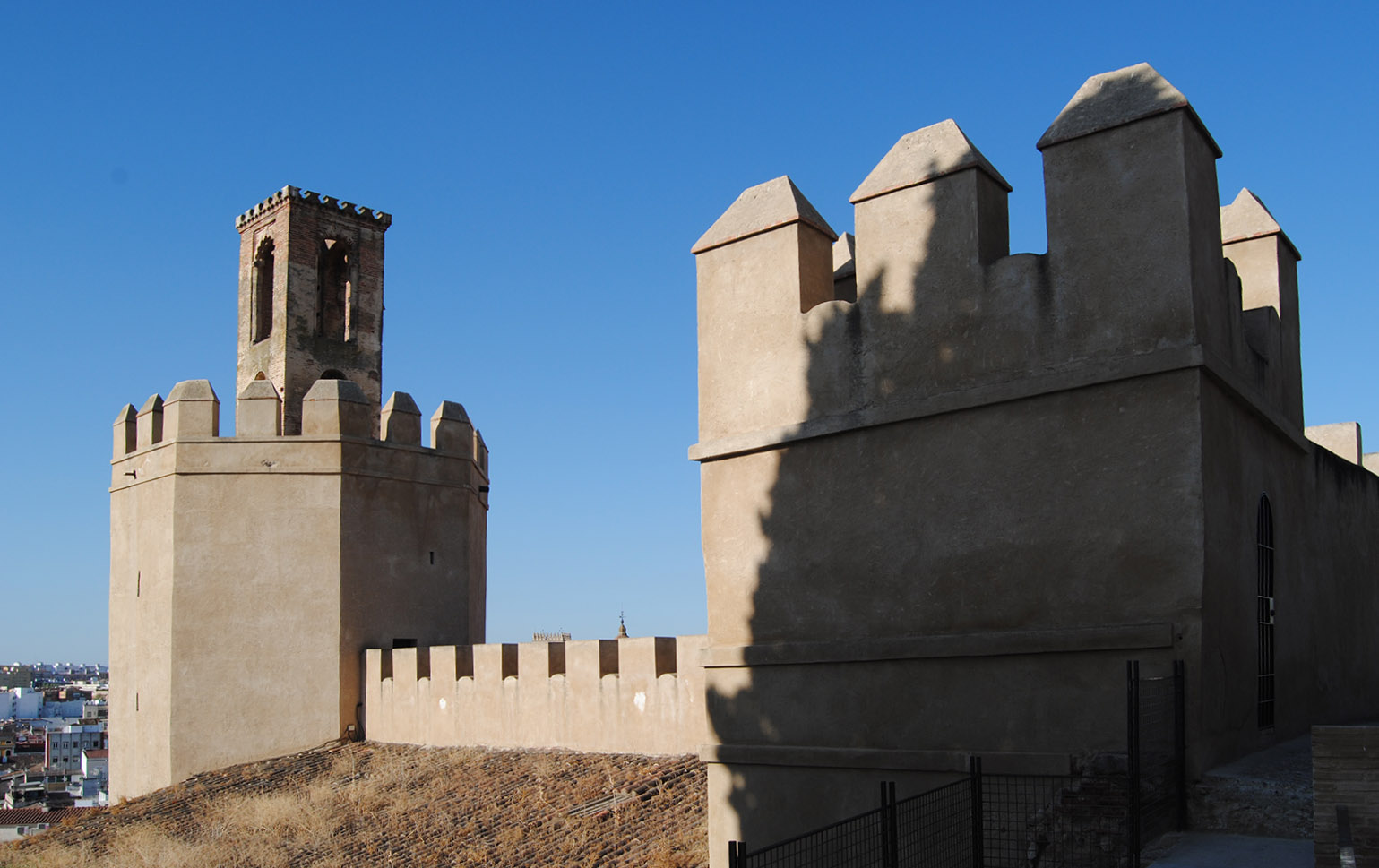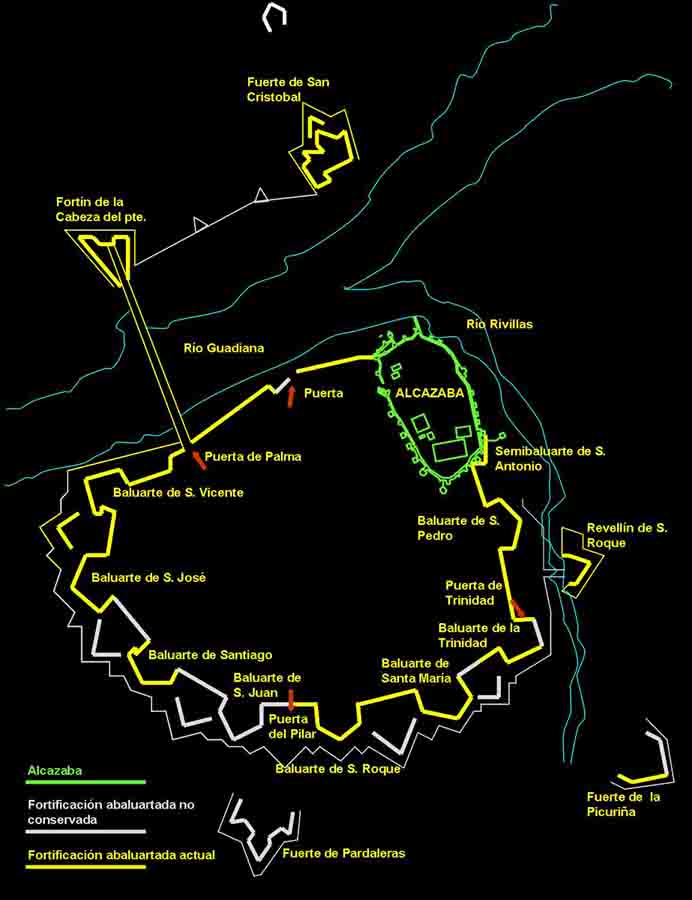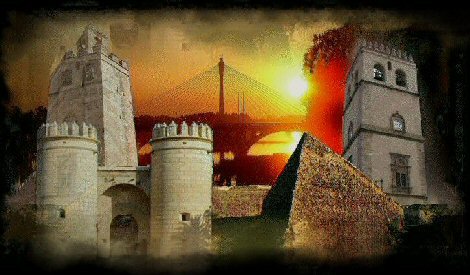THE WALLS OF BADAJOZ |
|
||
|
Since its foundation in 875, the city of Badajoz had several defensive enclosures that protected it from its enemies. The Cerro de la Muela area was the first to be fortified. And so, after the centuries this was expanded and strengthened, until at a certain time, its capacity did not allow to give accommodation to its inhabitants and the forces that made up its garrison. To the east and on the Rivillas stream settled the Eastern Arrabal, of whose fence remains are still preserved. Later the city extended to the west and south, where there could have been at least two more fences protecting the new suburbs. |
|||
THE ARAB DEFENSES OF THE CITY OF BADAJOZ |
|
| The wall that makes up the Alcazaba de Badajoz has a slightly oval shape, being the largest in Spain. He has stayed the primitive population since its founding. The initial calphate-era enclosure was initially of much smaller dimensions, and was later extended to the Rivillas where the Eastern Arrabal was erected. With the Almohades reforms the fortress approached the Guadiana, where fortified shells were built to provide abundant and safe water to the population. The city was later expanded by the only possible place, to the west, which was an area of more difficult defense, as the terrain is quite flat. The old walls were joined by powerful Albarrana towers and the main enclosure was endowed with doors in a fold. As seen in the 1645 plan, the Old Fence had Albanian and Barbacan towers, which expertly suggests that the Arab city was able to reach these limits. The disappearance of Arab cemeteries under the bastions of Santiago and San Juan corroborates this theory, since at that time the burials became outside the walls. | |
 |
 |
 |
 |
CLICK HERE TO GO TO THE ARABIC FORTERESS OF BADAJOZ |
|
THE OLD FENCE |
|||
Returning to the Stockholm plane, it can be seen how this fortification circled the old town to its full extent, and even exceeded by some points the limits of the later built bulging wall. Already old, the old fence, inherited in much of the Muslim era, was in a sorry state and its defenses were highly vulnerable to the destructive power of new artillery. For this reason in the soothing plane, a series of half moons appear that aimed to protect the most vulnerable points of the square. In the details of the plan, on the left, you can clearly see small revellines or lunettes located in front of the old Albarrana towers and some of the city gates. In the image on the right is recreated the old door of Santa Marina, highlighted on the same plane. |
|||
 |
 |
||
 |
 |
 |
 |
| During the Portuguese siege in 1600, besiegers built a series of earthly fortifications to complete the city siege. Some of these enclaves still remain "printed" on the ground around Badajoz. | |||
 |
 |
 |
 |
| FORT OF THE HILL OF THE MAYAS | DEFENSIVE LINE OF THE SLOPES OF THE ORINAZA | FUORT OF THE SLOPES OF THE ORINAZA | |
THE FORTIFICATION BASTION OF BADAJOZ |
|||
| The construction soon after, of the bulwark fortification, was the cause of the disappearance of the Old Fence. The new fortification was largely built on the medieval fence, replacing the old stones with pentagonal bastions joined by curtains built of stones and supported internally by clouted land intended to absorb the impacts of artillery. Externally, lunettes, revellins and exterior forts are contrasted. Lower walls were built and located on the ground, equipped with bulwarks with suitable adarves to place artillery batteries for their defense. | |||
 |
 |
 |
|
 |
 |
||
 |
 |
||
CLICK HERE TO GO TO THE BULWARK FORTIFICATION OF BADAJOZ |
|||
 |
 |
 |
|





